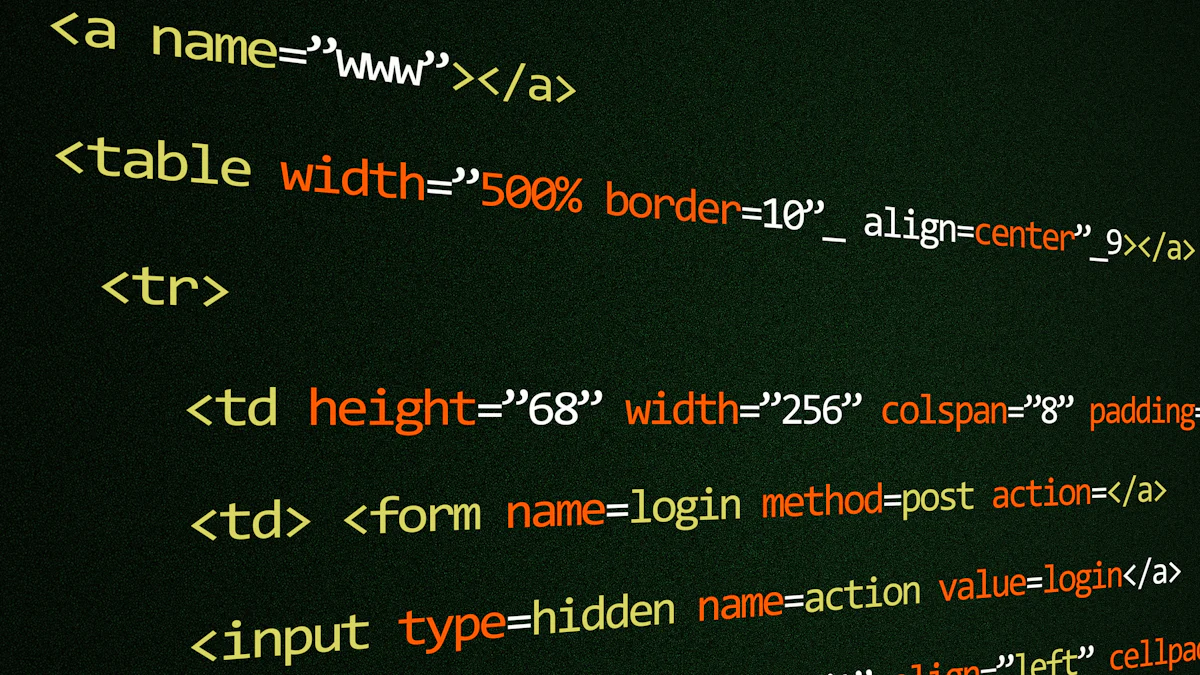What You Need to Know About the Amazon SDE1 Interview
Try Aihirely for
Smarter Interview Prep
Experience real-time AI support tailored to your Resume.
Boost your confidence and ace every question with
AI Mock Interview.

Image Source: pexels
Landing a Software Development Engineer (SDE1) role at Amazon is no small feat. The interview process is known for its rigor, but the rewards make it worth the effort. You’ll face challenges like mastering Amazon’s Leadership Principles, tackling complex coding problems, and handling behavioral questions. Many candidates struggle with insufficient coding practice or ineffective communication during technical rounds. That’s why preparation is your best ally.
The Amazon SDE1 US interview process evaluates not just your technical skills but also how well you align with Amazon’s culture. With the right mindset and strategy, you can turn this challenge into an incredible career opportunity.
Key Takeaways
-
Learn Amazon’s Leadership Principles. Show traits like ownership and caring about customers in your answers to do well in behavioral interviews.
-
Practice coding often on websites like LeetCode and HackerRank. Study important topics like data structures and algorithms to get ready for technical tests.
-
Use the STAR method for behavioral questions. Explain what you did and the results clearly, making sure it fits the job.
-
Try mock interviews. Pretending to be in an interview helps you talk better and feel more confident.
-
Plan your study time wisely. Make a schedule that includes coding, system design, and behavioral questions without rushing.
Understanding the Amazon SDE1 Role

Image Source: pexels
Responsibilities of an SDE1 at Amazon
As an SDE1 at Amazon, you’ll focus on building a strong foundation in software development. Your day-to-day tasks will include:
-
Writing production-ready code based on design documents.
-
Fixing bugs and creating test cases to ensure software quality.
-
Identifying errors using tools or log messages and collaborating with your team to resolve them.
-
Following logical directions to complete assigned tasks effectively.
At this level, you’ll work under the guidance of more experienced engineers. While SDE1s handle foundational tasks, higher-level roles like SDE2 and SDE3 take on more complex responsibilities, such as service ownership, mentoring, and making architectural decisions.
Skills and Qualities Amazon Values
Amazon looks for more than just technical skills. They value engineers who are curious, adaptable, and eager to learn. You’ll need a solid understanding of programming fundamentals and problem-solving skills. Strong communication is also key since you’ll collaborate with team members to tackle challenges.
Amazon’s Leadership Principles play a big role here. Traits like ownership, customer obsession, and bias for action are highly regarded. If you can demonstrate these qualities, you’ll stand out as a candidate.
Career Growth Opportunities in the SDE1 Role
Amazon offers plenty of opportunities to grow your career. Programs like the Amazon Technical Apprenticeship provide paid training to help you transition into technical roles. The Upskilling 2025 initiative focuses on preparing employees for higher-paying positions, both within Amazon and beyond.
You’ll also have access to AWS Training and Certification, which includes over 600 free digital courses. These resources can help you build expertise in cloud technologies and prepare for certifications. With these tools, you can advance to roles like SDE2 or explore other technical paths within Amazon.
The Amazon SDE1 US Interview Process
The amazon sde1 us interview process is designed to evaluate your technical skills, problem-solving abilities, and cultural fit. It’s a multi-step journey that requires preparation and focus. Let’s break it down.
Stages of the Interview
HR Screening
The process begins with HR screening. After you submit your resume and cover letter, recruiters review your qualifications to see if they match the role. If you’re shortlisted, you’ll receive a call or email to discuss your interests and confirm your fit for the position.
Online Assessment
Next, you’ll complete an online assessment. This step typically includes coding challenges, debugging tasks, and logical reasoning questions. For fresh graduates, it’s a chance to showcase your programming fundamentals.
Technical Phone Screen
If you pass the assessment, you’ll move on to the technical phone screen. This stage involves one or two interviews where you’ll solve coding problems and answer behavioral questions. You might also discuss your past projects or technical experiences.
On-Site Interview and Bar Raiser Round
The final stage is the on-site interview, which includes 4-6 rounds. These rounds test your coding skills, system design knowledge, and alignment with Amazon’s Leadership Principles. One of these rounds will be conducted by a Bar Raiser, an experienced interviewer who ensures Amazon’s hiring standards remain high.
Here’s a quick overview of the stages:
| Stage | Description |
|---|---|
| Resume Submission | Submit your resume, cover letter, and referrals. |
| Shortlisting | HR reviews your application and contacts you if shortlisted. |
| Online Assessment | Solve coding, debugging, and logical reasoning problems. |
| Phone Screen | Participate in technical and behavioral interviews over the phone. |
| On-site Interviews | Attend multiple rounds covering coding, system design, and behavior. |
| Debriefing | Interviewers discuss your performance. |
| Offer Letter | Receive an offer if you meet the criteria. |
Evaluation Criteria at Each Stage
Amazon evaluates you differently at each step. During resume screening, recruiters check if your experience aligns with the role. The HR call focuses on your interests and cultural fit. In the online assessment, they assess your coding and problem-solving skills. The phone screen and on-site interviews dive deeper into your technical expertise, system design abilities, and how well you embody Amazon’s Leadership Principles.
Timeline for the Interview Process
The amazon sde1 us interview process usually takes 4-8 weeks. After submitting your application, you’ll go through shortlisting, assessments, and interviews. The timeline depends on factors like scheduling availability and the number of interview rounds.
Tip: Stay patient and proactive during the process. Follow up with recruiters if you don’t hear back within the expected timeframe.
Types of Questions Asked
Coding Questions
Key Topics
Coding questions are a significant part of the Amazon SDE1 interview. You’ll encounter problems that test your understanding of data structures, algorithms, and problem-solving skills. Some of the most common topics include:
-
Arrays and Strings
-
Linked Lists
-
Stacks and Queues
-
Trees and Graphs
-
Sorting and Searching
-
Recursion and Backtracking
-
Dynamic Programming
Amazon focuses on these areas because they reflect real-world challenges you’ll face as an engineer. Make sure you’re comfortable with these concepts and can apply them to solve problems efficiently.
Example Problem and Solution Approach
Here’s a sample problem to give you an idea:
Problem: Find the first non-repeating character in a string.
Approach:
-
Use a hash map to store the frequency of each character.
-
Iterate through the string to find the first character with a frequency of 1.
This problem tests your ability to use data structures like hash maps and your understanding of string manipulation.
def first_non_repeating(s):
freq = {}
for char in s:
freq[char] = freq.get(char, 0) + 1
for char in s:
if freq[char] == 1:
return char
return None
System Design Questions
Expectations for SDE1 Candidates
As an SDE1, you’re not expected to design highly complex systems. However, you should demonstrate a basic understanding of system design principles. Recruiters typically ask 1-2 practical questions during the on-site interview. These questions focus on building simple systems with clear requirements.
Example System Design Problem
One common question is:
Design a Content Delivery Network (CDN): Create an architecture to deliver web content efficiently across the globe.
To answer, explain how you’d minimize latency and improve load times. Use concepts like caching, load balancing, and geographic distribution.
Behavioral Questions
Amazon Leadership Principles and Their Role
Behavioral questions at Amazon revolve around their Leadership Principles. These principles guide how employees work and make decisions. Interviewers want to see how your past experiences align with values like ownership, customer obsession, and bias for action.
Example Behavioral Question and STAR Method
A typical question might be:
“Tell me about a time you failed at work. What did you learn from it?”
Use the STAR method to structure your answer:
-
Situation: Briefly describe the context.
-
Task: Explain your role.
-
Action: Detail the steps you took.
-
Result: Share the outcome and what you learned.
For example, you could talk about a project where you missed a deadline, how you identified the issue, and what changes you made to prevent it from happening again.
Tip: Practice answering behavioral questions by tying your responses to Amazon’s Leadership Principles. This will help you stand out as a strong cultural fit.
Tips for Cracking the Amazon SDE1 Interview

Image Source: pexels
Essential Resources for Preparation
Coding Practice Platforms
To ace the coding rounds, you need consistent practice. Platforms like LeetCode, HackerRank, CodeChef, and Coderbyte are excellent for honing your skills. These sites offer a wide range of problems, from beginner to advanced levels, covering key topics like arrays, graphs, and dynamic programming. Focus on solving problems that mimic real-world scenarios, as these are often part of the amazon sde1 us interview process.
System Design Books and Online Courses
For system design preparation, resources like Grokking the System Design Interview are invaluable. This book simplifies complex concepts and provides practical examples. You can also explore online courses that teach the basics of designing scalable systems. These resources will help you understand how to approach system design questions, even as an entry-level candidate.
Effective Practice Strategies
Importance of Mock Interviews
Mock interviews are a game-changer. They simulate the actual interview environment, helping you get comfortable with the process. You’ll also refine your communication skills, which are critical during technical discussions. Feedback from these sessions highlights areas for improvement, boosting your confidence for the real thing. Try using tools like ChatGPT or scheduling mock interviews with peers or mentors.
Managing Preparation Time Efficiently
Time management is key when preparing for the interview. Start by creating a study plan that breaks down your preparation into manageable chunks. Dedicate specific days to coding, system design, and behavioral questions. Avoid cramming; instead, focus on consistent, daily practice. This approach ensures you cover all areas without feeling overwhelmed.
Behavioral Question Strategies
Structuring Answers with the STAR Method
The STAR method is your best friend for tackling behavioral questions. Here’s how you can structure your answers:
-
Situation: Set the stage with a brief context.
-
Task: Explain the challenge or goal you faced.
-
Action: Describe the steps you took to address the situation.
-
Result: Share the outcome, emphasizing measurable results if possible.
For example, if asked about a time you solved a tough problem, you could describe how you identified the issue, collaborated with your team, and implemented a solution that improved efficiency by 20%.
Aligning Responses with Leadership Principles
Amazon’s Leadership Principles should guide your responses. When answering behavioral questions, highlight traits like ownership, customer obsession, and bias for action. For instance, if you’re discussing a project, emphasize how you took initiative, prioritized customer needs, and delivered results. Aligning your answers with these principles shows you’re a cultural fit for Amazon.
Common Mistakes to Avoid
Neglecting Behavioral Questions
Many candidates underestimate the importance of behavioral questions, but these can make or break your interview. Amazon places a strong emphasis on its Leadership Principles, and behavioral questions are designed to assess how well you align with them. If you don’t prepare, you risk giving vague or irrelevant answers.
One common mistake is spending too much time on the “Situation” step of the STAR method. You might feel tempted to set the scene in great detail, but this can lose the interviewer’s attention. Instead, keep the context brief and focus on your actions and results. Another pitfall is failing to highlight your personal contributions. It’s easy to talk about what the team did, but interviewers want to know what you did to solve the problem.
Avoid sharing personal anecdotes that don’t relate to the job. For example, talking about a time you helped a friend move might show you’re helpful, but it doesn’t demonstrate your professional skills. Stick to examples that showcase your qualifications and align with Amazon’s principles.
Tip: Practice answering behavioral questions with concise, job-related stories. Focus on your role and the impact you made.
Overlooking System Design Preparation
System design might seem intimidating, especially for an entry-level role, but skipping this preparation is a big mistake. Even as an SDE1, you’re expected to understand basic design principles. Questions in this area test your ability to think critically about scalability, reliability, and performance.
Start by brushing up on core concepts like caching, load balancing, and concurrency. These are essential for building efficient systems. Use practical examples from real-life products to strengthen your understanding. Consistent practice in the weeks leading up to the interview will help you feel more confident.
System design preparation also shows that you’re ready to tackle real-world challenges. In today’s tech landscape, this knowledge is becoming increasingly important. By demonstrating your grasp of these principles, you’ll stand out as a candidate who’s ready to grow.
Pro Tip: Use resources like Grokking the System Design Interview to simplify complex topics and practice designing scalable systems.
Poor Time Management During the Interview
Time management is crucial during the interview. Many candidates struggle to balance speed and accuracy, especially in coding rounds. If you spend too much time on one problem, you might not finish the rest. On the other hand, rushing through questions can lead to careless mistakes.
To avoid this, practice solving problems under timed conditions. Platforms like LeetCode and HackerRank offer timed challenges that mimic the interview environment. During the interview, start by quickly understanding the problem requirements. Then, outline your approach before diving into the solution. This helps you stay organized and avoid wasting time on unnecessary revisions.
Reminder: If you get stuck, don’t panic. Communicate your thought process to the interviewer. They value how you approach problems, even if you don’t arrive at the perfect solution.
Relying Too Much on Memorized Solutions
Relying on memorized solutions might seem like a shortcut, but it can backfire during the Amazon SDE1 interview. Interviewers don’t just want the right answer—they want to see how you think. If you simply regurgitate a solution without understanding the logic behind it, you’ll struggle when faced with a new or slightly modified problem.
Why is this a problem?
Memorized solutions limit your ability to adapt. Amazon’s coding questions often test your problem-solving skills in unique ways. If you can’t explain your approach or adjust it to fit a different scenario, the interviewer will notice.
Instead of memorizing, focus on understanding the “why” and “how” behind each solution. For example, when solving a problem about finding the shortest path in a graph, don’t just memorize Dijkstra’s algorithm. Learn why it works, when to use it, and how to implement it step by step.
Here’s a quick example:
Problem: Find the maximum sum of a subarray in an array.
If you’ve memorized Kadane’s algorithm, you might write the code without thinking:
def max_subarray_sum(arr):
max_sum = current_sum = arr[0]
for num in arr[1:]:
current_sum = max(num, current_sum + num)
max_sum = max(max_sum, current_sum)
return max_sum
But what if the interviewer asks you to modify the problem? Maybe they want the indices of the subarray instead of the sum. If you don’t understand the algorithm, you’ll struggle to adapt.
Tip: Practice explaining your solutions out loud. This helps you internalize the logic and prepares you for follow-up questions.
Focus on building a strong foundation in problem-solving. When you understand the concepts, you’ll feel confident tackling any variation of a question.
The Amazon SDE1 US interview process might seem daunting, but with the right preparation, you can tackle it confidently. Focus on coding practice, mock interviews, and understanding Amazon’s Leadership Principles. Use platforms like LeetCode to sharpen your problem-solving skills and prepare examples that highlight your strengths. Stay consistent by creating a study plan and reviewing system design basics. Remember, every challenge is an opportunity to grow. Believe in your abilities, and approach the interview as a chance to showcase your potential. You’ve got this!
FAQ
1. How long should I prepare for the Amazon SDE1 interview?
Preparation time varies, but 6-8 weeks is a good starting point. Focus on coding, system design, and behavioral questions. Create a study plan and stick to it. Consistent practice is more effective than cramming.
2. What coding languages should I use during the interview?
Amazon doesn’t require a specific language. Use one you’re comfortable with, like Python, Java, or C++. Make sure you know its syntax and libraries well. This helps you write efficient and error-free code during the interview.
3. How do I handle a question I can’t solve?
Stay calm and explain your thought process. Break the problem into smaller parts and tackle what you can. Interviewers value how you approach challenges, even if you don’t find the perfect solution. Don’t hesitate to ask clarifying questions.
4. Are mock interviews really necessary?
Yes! Mock interviews help you practice under pressure and refine your communication skills. They also highlight areas for improvement. Use platforms like Pramp or ask a friend to simulate the experience. The more you practice, the more confident you’ll feel.
5. What’s the best way to prepare for behavioral questions?
Use the STAR method to structure your answers. Practice examples that align with Amazon’s Leadership Principles. Focus on your actions and results. Keep your stories concise and relevant to the role. This shows you’re a strong cultural fit.
Pro Tip: Write down your STAR stories and rehearse them out loud. This helps you sound natural and confident.
